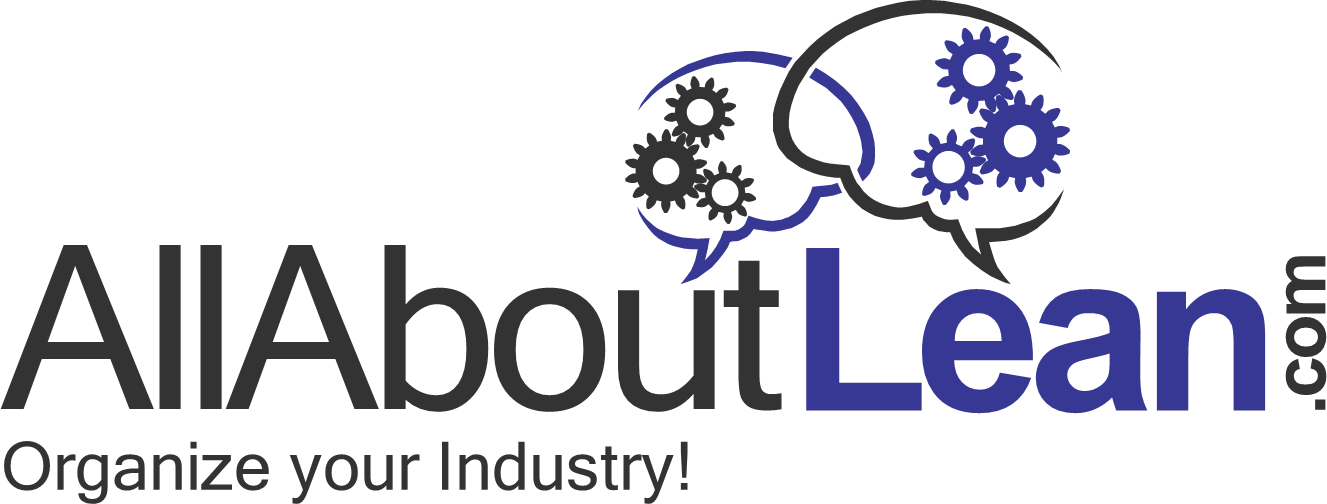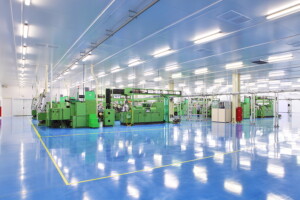 Pull systems like kanban and reorder point are a cornerstone of inventory management and fluctuation reduction in lean manufacturing. The production is managed based on ACTUAL consumption. Theoretically, it is also possible to include expected but not yet actual consumption. In this post, I will explain to you the concept behind it and why I think it is a bad idea…
Pull systems like kanban and reorder point are a cornerstone of inventory management and fluctuation reduction in lean manufacturing. The production is managed based on ACTUAL consumption. Theoretically, it is also possible to include expected but not yet actual consumption. In this post, I will explain to you the concept behind it and why I think it is a bad idea…
Inventory
On the Benefits of Putting Your Processes Close Together
Steps Toward One-Piece Flow
What Are the Advantages of One-Piece Flow?
 One-piece flow is strongly connected to lean manufacturing. It moves each product to the next stage as soon as it is completed at the previous stage in the value stream. This brings lots of benefits. While I have written about one-piece flow before, in this post I would like to go into detail on the beautiful benefits of it.
One-piece flow is strongly connected to lean manufacturing. It moves each product to the next stage as soon as it is completed at the previous stage in the value stream. This brings lots of benefits. While I have written about one-piece flow before, in this post I would like to go into detail on the beautiful benefits of it.
Make-to-Order vs Make-to-Stock: Additional Decision Factors
For all your products, you have to decide between make-to-order and make-to-stock. A similar decision is needed for components or raw materials that you produce or purchase. As described in my precious posts, the key criteria is the quantity and the fluctuation. In this last post in this small series I will look at where to make the cut, and what other factory play a secondary role for your production system.
Make-to-Order vs Make-to-Stock: The ABC XYZ Analysis
 In my last post I started to look at when to produce make-to-stock and when to produce make-to-order. There are quite a few factors that influence this decision (more on this in my next post), but the most important ones are the total sales or production volume as well as the fluctuations thereof. To understand these, you could use a Pareto analysis, an ABC analysis, or an ABC-XYZ analysis. I do like to include not only quantity but also fluctuations, but usually I need to divide this into only two groups, and the three groups of ABC or nine groups of ABC-XYZ is, in my view, a bit of an overkill. Anyway, let’s have a look:
In my last post I started to look at when to produce make-to-stock and when to produce make-to-order. There are quite a few factors that influence this decision (more on this in my next post), but the most important ones are the total sales or production volume as well as the fluctuations thereof. To understand these, you could use a Pareto analysis, an ABC analysis, or an ABC-XYZ analysis. I do like to include not only quantity but also fluctuations, but usually I need to divide this into only two groups, and the three groups of ABC or nine groups of ABC-XYZ is, in my view, a bit of an overkill. Anyway, let’s have a look:
When to Produce Make-to-Order, When Make-to-Stock?
 One of the questions for any production system is if the product is produced on stock before the customer order (make-to-stock, MTS), or only on demand after the customer order (make-to-order, MTO). In many cases this is an easy decision. Custom-made items are always make-to-order, since you cannot start before you know what the product will be. Everything else does have exceptions. Let me dig deeper into the decision tree on deciding which items to produce on order, and which ones for stock. This is a short series of blog posts, and the first one looks at the key aspect (but not the only one) in deciding between make-to-order and make-to-stock.
One of the questions for any production system is if the product is produced on stock before the customer order (make-to-stock, MTS), or only on demand after the customer order (make-to-order, MTO). In many cases this is an easy decision. Custom-made items are always make-to-order, since you cannot start before you know what the product will be. Everything else does have exceptions. Let me dig deeper into the decision tree on deciding which items to produce on order, and which ones for stock. This is a short series of blog posts, and the first one looks at the key aspect (but not the only one) in deciding between make-to-order and make-to-stock.
Reducing Lead Time 3 – Throughput and Lot Size
 Two more factors for reducing your lead time are the throughput and the lot size. However, the throughput has a smaller effect – although with other benefits that are often larger than the reduction in the lead time. The reduction in the lot size can have a huge effect, although usually only for make-to-stock production. Nevertheless, both are worth looking at if you want to reduce the lead time.
Two more factors for reducing your lead time are the throughput and the lot size. However, the throughput has a smaller effect – although with other benefits that are often larger than the reduction in the lead time. The reduction in the lot size can have a huge effect, although usually only for make-to-stock production. Nevertheless, both are worth looking at if you want to reduce the lead time.



